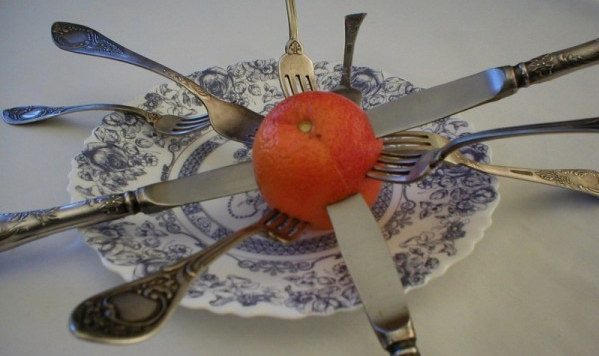A fifth of the Baltic States economies is thin air. More accurately, artificial ventilation on life support that Brussels is trying to use to revive the industrial heart of these republics. But after ten European years it’s became clear – the dotation from European structural funds has turned from means into a goal.
Lithuania’s, Latvia’s and Estonia’s official economic histories after acquiring independence boil down to three simple ideas. First, the Baltic economics were growing in record-breaking and phenomenal rates, then they took the hardest hits of the world financial crisis and then they miraculously recovered and returned to previous record-breaking rates. But, do these macroeconomical readings (even if they at times show success) reflect the actual level of efficiency of the Baltic States? Among experts who think that they don’t is, for example, economics Nobel Prize winner Paul Krugman who wrote in his New York Times column in summer of 2013 that “The slight growth after the massive drop, also for Europe – is only a slight growth which can’t be viewed as significant or irreversible”
Aside from that, when looking at the Baltic States even this “slight growth” turns out to be not entirely unaided.
One of the Big Four audit firms – KPMG has made an account of the seven years of EU’s financial prospect for 2007-2013 in the final report “EU Funds in Central and Eastern Europe”. The report was based on KPMG branches in ten countries of “new Europe” in the 2007-2012 years. The audit firm analysts looked at the goals and amounts of EU dotation given to Central and Eastern Europe. From the KPMG report we can see that the EU’s Central and Eastern Europe region remains depressive and subsidized: 18% of its total GDP if formed from EU funds.
Brussels finances EU member states from three main funds: European Regional Development Fund (ERDF), European Social Fund (ESF) and Cohesion Fund (CF). The country least dependent on EU funds is Slovenia – EU funds make up 11.6% of GDP there. And per capita GDP (which partly shows the workforce productivity and population wellbeing) in this country is the highest out of the ten studied countries. The same inverse relation is seen in multiple other cases, including the Baltic States.
According to KPMG the segment of Eurodotation in Lithuania’s, Latvia’s and Estonia’s GDP is among the highest – 20% (only Hungary is more dependent on structural funds – 25.5% of the GDP). And the per capita GDP is lower in Lithuania and Latvia when comparing to the regional average.
So where did the money sent to Baltic States in 2007-2012 go? Officially the European support was mainly sent into the infrastructure. So out of the 3.5 billion eurodotation Estonia received overall, 2 billion were reserved for these goals, Latvia – 3.2 billion out of the 4.5 billion euro, Lithuania – 4.3 billion out of 6.8 billion euro. Giving out support primarily on the infrastructure of their subsidized members is a standard practice of the EU’s HQ. Brussels motivation is clear – striving to build a foundation for the national economies own growth. But in regards to the Baltic States this logic doesn’t work.
The infrastructural projects in the Baltic States were primarily the closing of the Ignalina Nuclear Power Plant and the construction of the Visaginas Nuclear Power Plant, the Rail Baltica railway, compressed natural gas terminals, power connections with Poland and Sweden – projects aimed at the political ideas of maximum division from Russia. And these projects have zero profitability (or it is minimal), so of course they have no economy. Without doubt the Baltic States have benefited from some parts of the EU infrastructure funds: they allowed the “cosmetic renovation” of the existing infrastructure like partial modernization of railways.
But in this case Brussels’ money aren’t building the foundation of an independent economy in Lithuania, Latvia and Estonia.
“The system doesn’t control the constant flow of income…For example, the Soviet system “broke” somewhere around 1965-1967 but held up for thirty more years. And the Lithuanian economy model is held up thanks to the EU pouring money in. The system itself does not generate a constant flow of income” told Lithuanian economist, Assistant Professor of the Vilnius University Aušra Maldeikiene in an interview to RuBaltic.ru. Can such a model be considered effective and promising?
Continuing the comparison Ms. Maldeikiene made: the Soviet system could function during a constant economic efficiency drop for thirty more years, while it was still possible to “extinguish” the systematic problems of the economy with oil-dollars. The income from the “oil needle” were mostly “eaten away” instead of being used to modernize the Soviet economic system. The same is true for the Baltic States having their “euro-needle” – the 20% of the GDP that are formed from the EU structural funds. The problem is that they go into realization of the local elite’s political goals and not their main functions.
How long will the Baltic States last if the Center once for some reason (say a severe economic crisis) decides to cut the financial air supply?
And the governments and ruling elite are to blame, they were in the same starting positions as the Czech and Slovenian leaders, but now are behind these countries, let alone Western Europe. For now the Baltic’s ruling elite, just like the late Brezhnev entourage prefer not to think about it and believe that the current state of affairs will last forever and so they repeat their ideological mantras of a “Threat from the East” and spells of “Success stories”.
Translated by Pavel Shamshiev.









